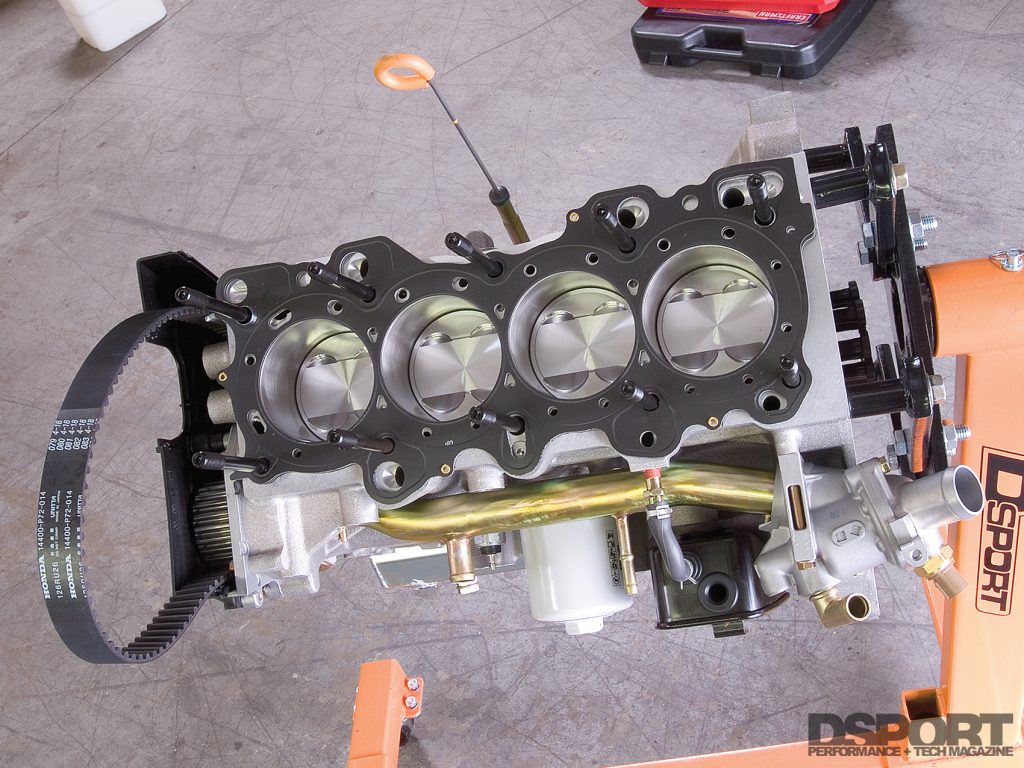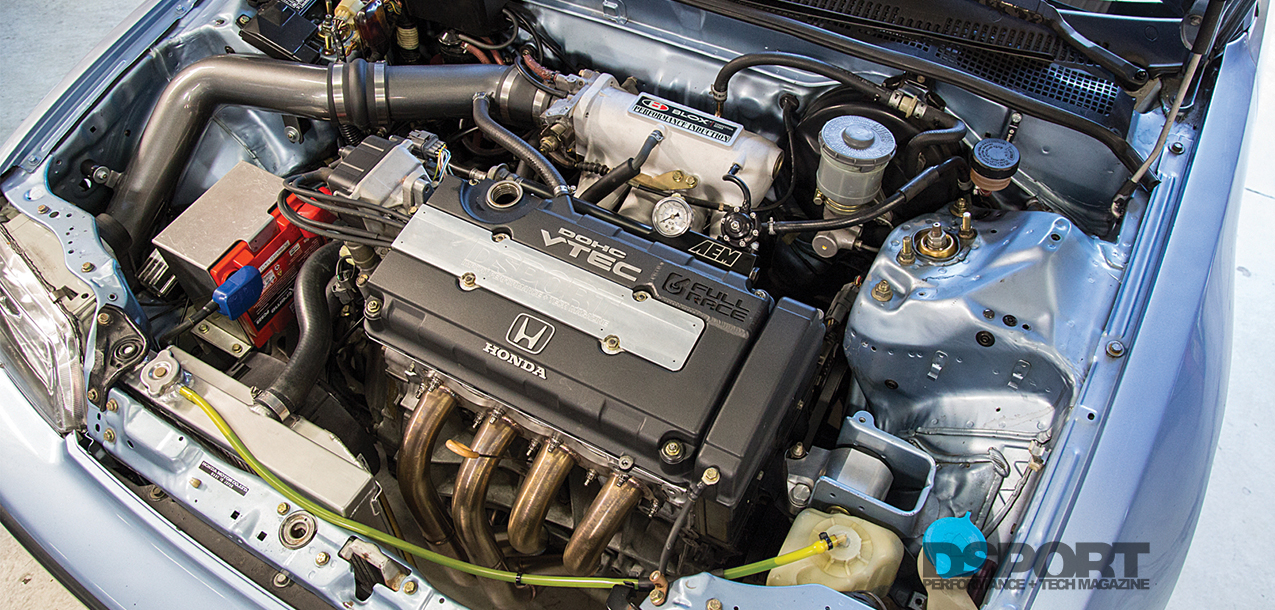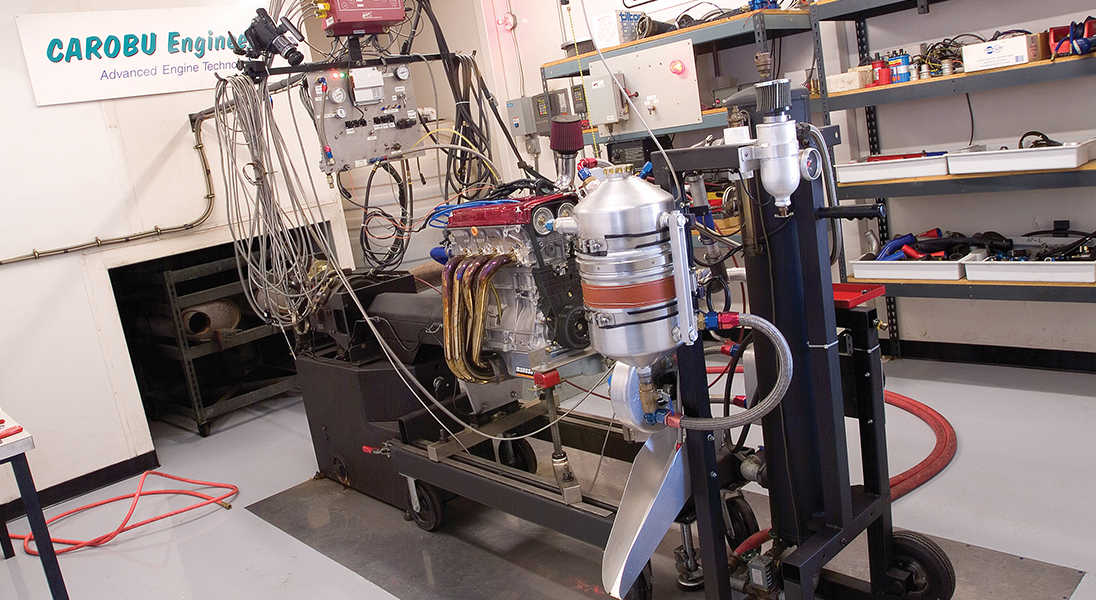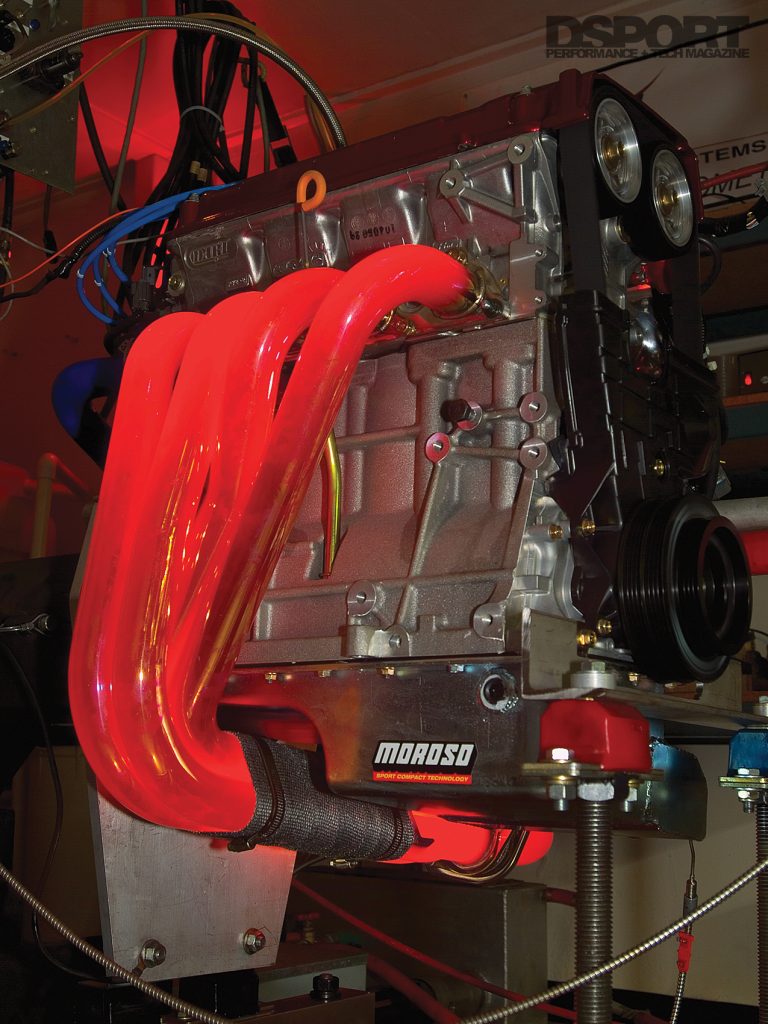Nothing beats boost. A big enough turbo at high enough boost pressure delivers big power numbers regardless of how well the engine and performance combination were put together. If you take away this ultimate power adder, you better know your shit if you want to make power. Nearly 20 years ago, we put together a pair of DART B-series engines (84×95 bore and stroke equaling 2.1-liters of displacement) that delivered over 265 horsepower on 91 octane pump gas (about 225whp). This was done with mostly off-the-shelf parts. The 127 horsepower per liter that was realized on 91-octane pump gas for a daily-driven B-series is impressive even by today’s standards. Let’s not forget, Honda’s best B-series only delivered 108 horsepower per liter. However, technology has improved over the past 20 years. and we’ve not only learned more, but we also can do more since we have our Club DSPORT engine development center at our facility. It was time to see if we could hit 130, 135, 140 or maybe even 150 horsepower per liter in “all-motor” form.
Text by Gianni Jeong // Photos by Staff
DSPORT Issue #206
The Trigger
So what triggered this B-series revival? One of the regular racers that we had built a 2JZ road-racing engine wanted a cheap track car and ended up picking an EG Civic with a B-series swap. The engine was tired and needed a refresh, so his original plan was to just do a basic performance rebuild. This snowballed into “wait a second, we’ve got plenty of B-series parts from our DART engine builds and our 1000+whp B-series turbo build, so maybe we should explore options.”
 The Original Plan
The Original Plan
Our first thought was let’s see how one of these Dart B-series engines would perform when set up for road racing. We wanted to keep the 2.1-liter displacement but raise the compression ratio and work on optimizing the intake, head, cams and exhaust setup to up the power. Unfortunately, we soon learned that the VTEC Club N1 class that the engine would be participating in required an OEM Honda engine block. The standard and tall-deck Dart engine blocks that we have would need to sit this one out.
Plan B
The original “plan B” was to sleeve the GS-R block to be able to go to an 84mm bore. However, the additional expense of sleeving the block put it just outside the budget for the build. Instead, we would be relying upon the factory cast-in sleeves that are better left as thick as possible. This meant we would hone the cylinders to a finished bore size of 81.25mm. With a 95mm stroke, we will now end up with 1,970.5cc of displacement.
Horsepower Targets
With a known displacement of 1.9705 liters, we know what our horsepower will need to be to hit the 130-, 135-, 140-, 145- and 150-horsepower per liter mark. The chart below outlines what the flywheel and at the wheel horsepower will be for the 1.97-liter engine at different horsepower-per-liter thresholds.
Beyond 127hp/Liter: The Formula
It is interesting that both the DART engines from nearly 20 years ago and our Project CRX (issue #203) are both at the 127 horsepower per liter mark, despite one engine checking in at 1.7 liters and the other at 2.1 liters. This 127hp/liter mark seems to be a reality for a well-built, daily-driven B-series on 91 octane pump gas. So how do we go beyond this mark with this road-race engine?
With an All-Motor setup, more power-per-liter requires either improvements to the engine’s volumetric efficiency, thermal efficiency or its mechanical efficiency. An engine’s volumetric efficiency is determined by its cylinder head and port design, the camshafts and the design and shape of the piston and combustion chamber. Modifications that improve the filling of the cylinder with more air and fuel are the result of improvements to the engine’s volumetric efficiency.
An engine’s thermal efficiency relates to how much energy from the combustion of the air/fuel mixture is turned into flywheel horsepower and how much is wasted in the exhaust and cooling system. A proper selection of thermal barrier coatings applied in the right places can help improve the thermal efficiency of the engine. However, the main determining factor of an engine’s thermal efficiency is compression ratio. So why not run a super-high compression ratio? There are two reasons. The better-known reason is that there is a limit based on the knock-resistance (octane rating) of the fuel. The higher the knock-resistance (octane rating) of the fuel, the higher the compression ratio that can be used. The lesser-known reason for being reasonable with the engine’s static compression ratio is that increases to the compression ratio of the engine also result in reductions in the engines volumetric efficiency. Choosing the best compression ratio for a given application will be covered next month and this is one issue you don’t want to miss.
Finally, improving an engine’s mechanical efficiency means making it more efficient at turning the captured energy from the combustion of the air/fuel mixture into horsepower at the flywheel. Reducing friction, improving geometries and reducing windage are some of the ways to improve an engine’s mechanical efficiency.





